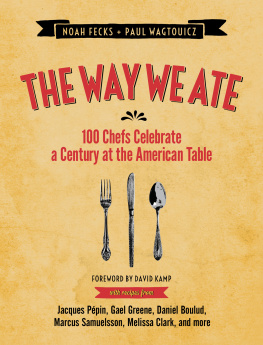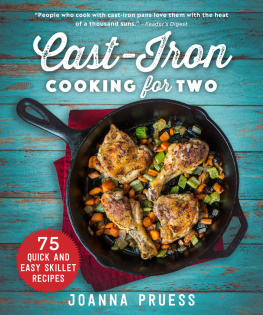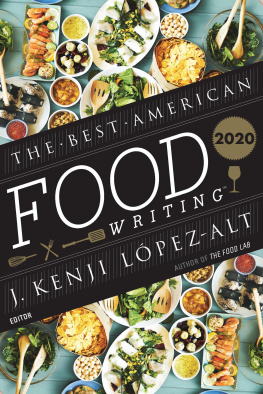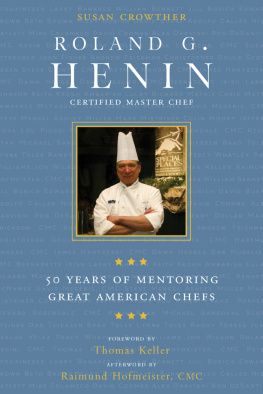Thank you for downloading this Touchstone eBook.
Join our mailing list and get updates on new releases, deals, bonus content and other great books from Touchstone and Simon & Schuster.
C LICK H ERE T O S IGN U P
or visit us online to sign up at
eBookNews.SimonandSchuster.com

CONTENTS

For Evelyn and Vito, Geraldine and Robert

Acknowledgments

NOAH + PAUL WOULD LIKE TO THANK:
Stephanie Anderson, Heather Barbod, Evan Barbour, Amanda Barney and Matthew Orr, Melanie Belkin, Madeline Block, Lauren Bloomberg, Cheryl Brown, Jacque Burke, Robert Chistensen, Linnea Covington, Sara Demian, Hillary Dixler, Sky Dylan-Robbins, Lucinda East, Samantha Felix, Camilla Ferenczi, Norma Galehouse, Evy Gonzales, Robin Gould and Mark Jordan, Tina Heath-Schuttenberg, Lily Hodge, Lauren Hom, John Hopkins, Teresa Hopkins, Michelle Howry, Jono Jarrett, Olga Katsnelson, Kristen Kelly, Jennifer Kim, Nina Kocher, Eric Korsh and Ginevra Iverson, Dana Lapan, Emily Learnard, Amy Lombardi, Leyla Marchetto, Keith Marran, Patty McAvoy, Molly McDonald, Alexandra Norindr, the Orient Country Store, Sunny Ozell, Cassandre Pallas, Jen Pelka, Chris Ramey and Tara DiGiovanni, Charlotte Robertson, Allison and Matt Robicelli, Jennifer Rodstrom, Brian Roof, Jessica Rosen, Helen Rosner, AJ Schaller, Jill Schulster, Ruth Schultz, Tina Schuttenberg, Carla Siegel, Anna Stockwell, Kate Telfeyan, Samantha Ullrich, Seth Unger, Paul Vitale, Rachel Walensky, Katharine Woodward, and Olivia Young.
Special thanks: Allegra Ben-Amotz

FOREWORD

I F YOU VE LIVED LONG ENOUGH, and have obsessed over food long enough, you can pinpoint the precise moments in your lifetime when certain foods happened. Paella was very pre-rock 1960s, for example: the go-to dinner-party dish of your parents when they were acting the part of young sophisticates, playing Miles Daviss LP Sketches of Spain on the hi-fi while their guests, in shift dresses and skinny-lapeled suits, exulted in the musselly vapors rising from the enameled Dansk serving bowl. The mid-aughts were when charcuterie officially happened, remember? Like, how, it was 2006, and, all of a sudden, every neo- rustico joint offered an assortment of house-cured salumi , inevitably served on a plank of wood? Balsamic vinegar most definitely happened in 1983, the summer of: that weekend you were at the beach house of your yuppie older cousinthe one who married an architect and had been repeatedly to Tuscany and Emilia-Romagna. She drizzled some syrupy-looking liquid over some toasted pieces of bread smeared with raw cheese. You said, in awe and wonderment, What are these? She replied, coolly and offhandedly, Crostini with goat cheese, sauted leek, and balsamic vinegar. You thought, There is a whole world out there that I know nothing about .
Er, forgive the lapse from the universal into the personalits just that food and drink are so inexorably caught up in memory and, therefore, in specific time periods. The curators of this book, Noah Fecks and Paul Wagtouicz, understand this. What they have cleverly not done, in the course of compiling recipes to represent every year of the twentieth century, is take the literalist, food-museum approach: Here is an old recipe from 1921, heres one from 1942, and heres one from 1997 . Rather, they have gone for culinary impressionism, taking the idea of a specific year and then inviting a chef or an otherwise distinguished food person to translate that yearits events, its ethos, its salient gastrocultural qualitiesinto a beautifully realized dish or drink. (And beautifully presented, too; the curators are expert food photographers.)
In some cases, you wind up with offerings that might have indeed been served in the period in question. Both Pichet Ongs minty-green Grasshopper Ice Box Cake (1954) and Nicole Taylors Lemon Coconut Stack Cake (1940)the latter garnished with gardenias in homage to Hattie McDaniel, who wore gardenias in her hair when she took home the Oscar for Best Supporting Actress that yearare confections you could see being hefted out of a big ol Norge Royal Rollator fridge and served on Fiestaware. Claudia Gonsons eponymous Claudias Crunchy Salad (1970) is marvelously evocative of crunchier, earthier times, when patchwork denim was socially acceptable and Cat Stevenss Morning Has Broken was all over the radio.
Yet other participants in this book use their assigned year as a leaping-off point for more fanciful preparations. Would you have found Leah Cohens Braised Beef Cheeks with Carrot Puree, Candy-Stripe Beets, and Tarragon on a restaurant menu in 1907? Most likely not. But 1907 was the year that the pioneering Lumire brothers brought their color photography process to the public, and Cohens dish, so vivid in both its flavors and its colors, is a jolt of sensory wowakin to the jolt that the Lumires invention delivered in those sepiatone days. More out-there still is Joshua Marcuss Roasted Goose with Matzo Ball Gnocchi and Morels in Sherry Cream Sauce (1948), which putatively celebrates the establishment of the State of Israel but is neither kosher (it combines meat with dairy) nor orthodox (rendered goose schmalz?). It is, however, undoubtedly celebratory.
Then there are those chefs who are a living part of our own culinary history. Representing 1961, the epochal year of Julia Childs Mastering the Art of French Cooking, is Childs friend Jacques Ppin, whose Stuffed Quail with Grape Sauce is both the kind of dish that would have sent Julia into rapturous warbling and the kind of dish the young Ppin might have prepared in the kitchen of Henri Souls Le Pavillon when he first arrived in the United States. Cut to 1992, when one of the benefactors of the Francophilia that Child and Ppin fostered, Daniel Boulud, left Le Cirque to open his own place, Daniel. Bouluds Beef Shank Terrine (1993), peasant in its ingredient list but uptown in its preparation, embodies the defussified French food that he helped popularize in the nineties.
And, occasionally, there is a recipe so utterly transportive, such as Keedick Coulters Pickled Shrimp and Tomato Aspic Picnic (1921), with the shrimp packed down in mason jars, that it summons breezy reveries of a time and place youve never even inhabited. Do I understand quite why Coulters lunchtime twofer involuntarily conjures a vision of sunburned children riding the running boards of a 1921 Packard as it trundles along a North Carolina beachfront road? No. Do I enjoy the vision? Of course!
Good eating experiences are like thatimmersive and fun. Messrs. Fecks and Wagtouicz are immersion experts, with a wonderful photographic blog, The Way We Ate , that finds them cooking their way through back issues of Gourmet magazine. Through their kitchen adventures, they have made a pretty awesome discovery: the secret of time travel. It all happens by means of this magical portal known as... the mouth.
David Kamp
00
Next page







 CONTENTS
CONTENTS 

